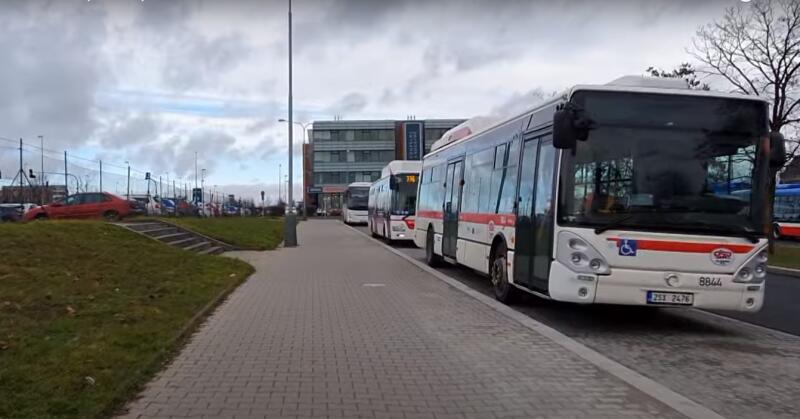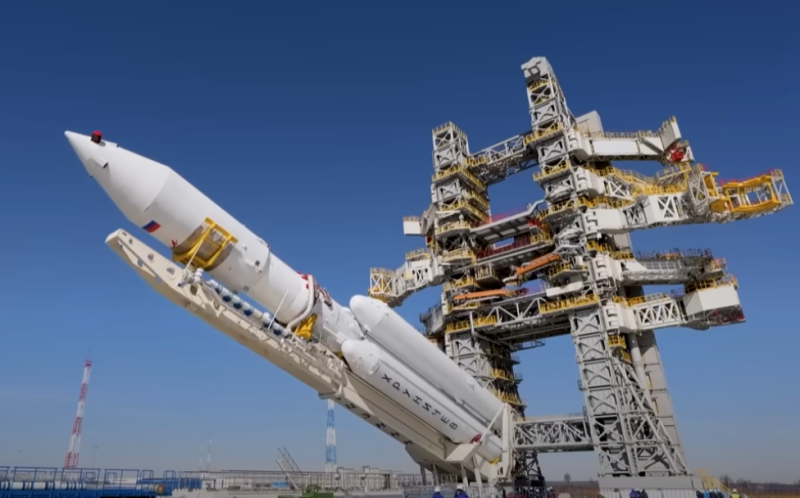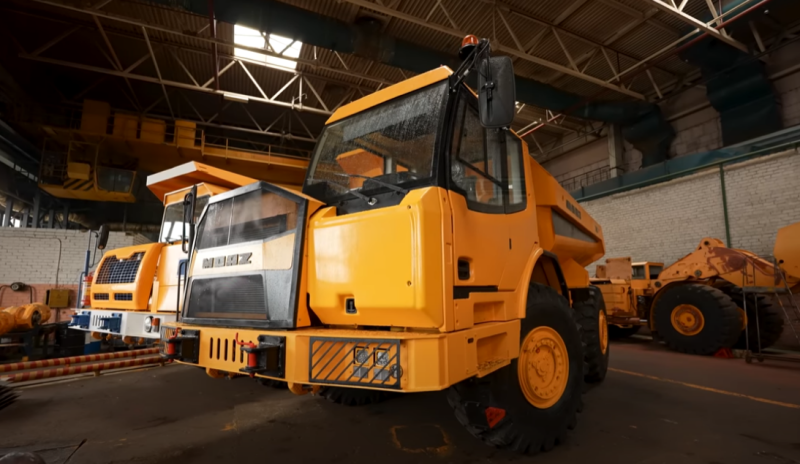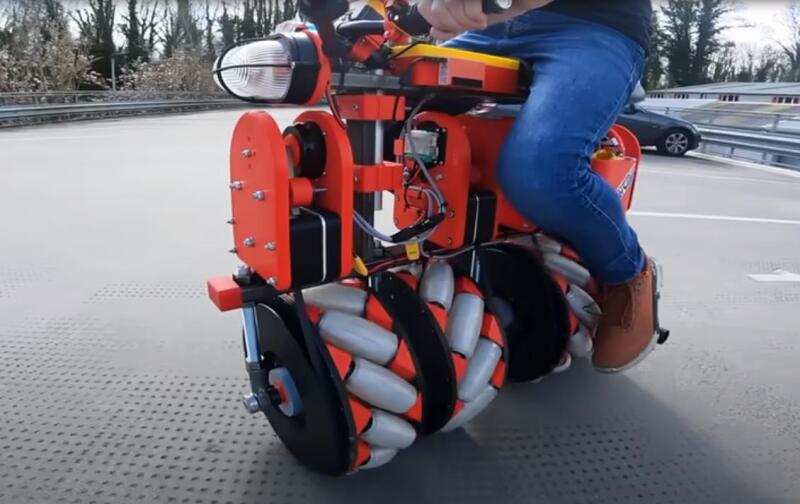Such favorable conditions allow the transport enterprises of megacities to create many intertwining and interacting routes, allowing you to have several options for fast and comfortable movement from “point A” to “point B”. At the same time, the carriers are not in the overlay, and we, the passengers, are pleased and comfortable.
Yet various statistical groups are constantly trying to choose the "best of the best." For this, a special monitoring of urban transport routes in European cities is carried out. At the same time, such indicators as the maximum coverage of the territory of the entrance of transport to remote parts of the city, the convenience of transfers from route to route, frequency of movement, fare and much more are taken into account. So in 2021, the Russian capital also took second place in terms of the overall indicator. And this year, the researchers put "Golden Prague" in such a high place.
 The main station is the railway gate of Prague. Photo: youtube.com
The main station is the railway gate of Prague. Photo: youtube.comBut is it really so “elected” among Czechs (in Czech, it means “excellent”)? As a person who has lived here for half a year, I wanted to express my own opinion. Maybe it will turn out to be a little subjective, but I will just try to share with you the observations that I received during six months of active use of all types of Prague municipal transport.
The Prague metro is the pride of any Praguer
To begin with, I’ll clarify that this is exactly what the indigenous inhabitants of the Czech capital are called (it’s like “Muscovites” or “Petersburgers”). They are actually proud of the fact that this is the only subway in the whole country and even in the territory of the former Czechoslovakia. Not surprising, because a city with a population of more than 1,3 million is quite suitable for an underground line. True, the residents of the Central European capital had to wait an excruciatingly long time for the metro. One way or another, but for almost half a century it has been the fastest way to travel around Prague.
The Prague metro today includes three operating lines. Currently, preparations are underway for the construction of a new fourth line, which will stretch to the remote urban area of Kamyk.
According to the worldwide classification, they are divided into different colors:
✅ yellow
✅ green
✅ red
All three of today's lines have sufficient workload, which grows during peak hours. This is the morning time, returning from work and late evening. Evening walks are very popular among Czechs, emigrants and guests of the capital. After all, Prague at night is an amazing sight.
The city seems to be transformed under the soft night illumination. Prague Castle, Charles Bridge overlooking the Vltava and Wenceslas Square make a particularly beautiful sight. Therefore, it is not surprising that closer to 10 o'clock in the evening it is in these directions that you can meet cars full of passengers returning from the evening promenade.
On all branches, modern metro cars of local production or manufactured under license from Siemens run. The exception is the green line "B". Its fleet is completed with older rolling stock. It differs not only in the worst external design, but also in less comfortable seats in all cars.
 On the "red" line, modern and comfortable carriages. Photo: youtube.com
On the "red" line, modern and comfortable carriages. Photo: youtube.comIn addition to this - excessive vibration and low sound insulation. It is very unpleasant for a passenger sitting on uncomfortable chairs and “enjoying” a slight draft and unpleasant noise during acceleration, walking around the car. Fortunately, I rarely had to travel along this line.
In general, the subway is made conveniently, but without the Soviet pomposity that many of us are accustomed to. The stations are practical and located at a shallow depth. I will say more, as an echo of the history of the Prague high-speed tram, on all lines there are a number of surface metro stations. There, instead of island platforms, classical railway ones are installed. And, another important plus: the train that has arrived can be seen from the street and, having accelerated, you can even catch it! This option is unrealistic in the case of underground metro stations.
If we talk about the geographical position of the lines and the interval of train traffic, I will note the following. With the first - everything is fine. Maximum literacy in choosing the direction of all three lines, their intersection and transfer stations. The second one is fine too. Only late in the evening or on weekends, the waiting time increases to almost 10 minutes. Too much, however, the Czechs, mostly leisurely people. Therefore, everything suits everyone.
Modern trams on Prague streets
In those places where the subway does not yet run, the baton was successfully intercepted by the tram lines. It is they who are recommended to use when traveling to the historic district of the city of Stare Mesto. Yes, the metro will bring you much faster, but what can you see from the local beauties through the window of the metro car? The question is, of course, rhetorical.
The tram is quite another matter. Under the rhythmic sound of the wheels of a slowly moving carriage, you can see all the beauty of Prague streets and buildings.
But, unfortunately, there are still a lot of morally and physically obsolete Tatra 3 cars in the local park. Maybe someone will consider them a worthy addition to the anachronistic background. You know, I think a little differently. Low comfort and strong noise in the carriages of such trams eliminates the admiration of Prague's sights.
It’s a completely different matter - brand new high-speed and stylish Skoda trams, which we have already talked about in one from past material. It is pleasant to be in their salons, and the inner comfort is perfectly combined with the outer beauty of the Czech capital.
 Tram entrance doors are opened manually. Photo: youtube.com
Tram entrance doors are opened manually. Photo: youtube.comAll tram routes are well thought out, and the interval of rail transport is minimal. Usually it does not exceed 5 minutes. At each stop there is a stand with a timetable for all routes passing through it. True, the time of arrival is not always strictly observed. Well, let's not forget, we're not in Germany after all!
Pros and cons of Prague bus routes
Buses, of course, have the most extensive network in the Czech capital. They don't need tunnels or rails. Fairly good asphalt pavement. And with this in Prague - no problem.
Yes, and all local buses have a special city coloring in white and red. The entire fleet consists of brand new comfortable vehicles, moving quickly and confidently along the winding city streets.
I had to constantly use only a few of them. Therefore, I will focus on routes No. 189, 197 and 215. The first and last are among the shortest in the Czech capital. They include less than a dozen stops in one direction. On the contrary, the "197th" is very long, with a length of more than 45 km in both directions!
 City buses: reliable and maneuverable. Photo: youtube.com
City buses: reliable and maneuverable. Photo: youtube.comDespite its length, the buses roughly adhere to the schedule. Moreover, there is also a shortened version of the route. But with their regularity is just a disaster. Repeatedly, we have witnessed that the route announced in the schedule was simply not put on the line. In this case, a person rushing to work or to see a doctor found himself in a difficult situation. But experienced passengers took this "feature" into account, choosing a margin of time.
"189th" can be called exemplary. This bus has always respected the schedule and frequency of travel. But his “colleague”, despite the brevity of the route, constantly sinned with chronic delays.
 Local railway lines also pass through the city. Photo: youtube.com
Local railway lines also pass through the city. Photo: youtube.comI think that all the listed flaws somehow do not really pull on the “silver medalist” in the transport rating. But, these are just my personal impressions. After all, by and large, Prague transport moves regularly and the waiting time is not so long. And the Czechs, as I mentioned, do not really bother with possible inconveniences.










